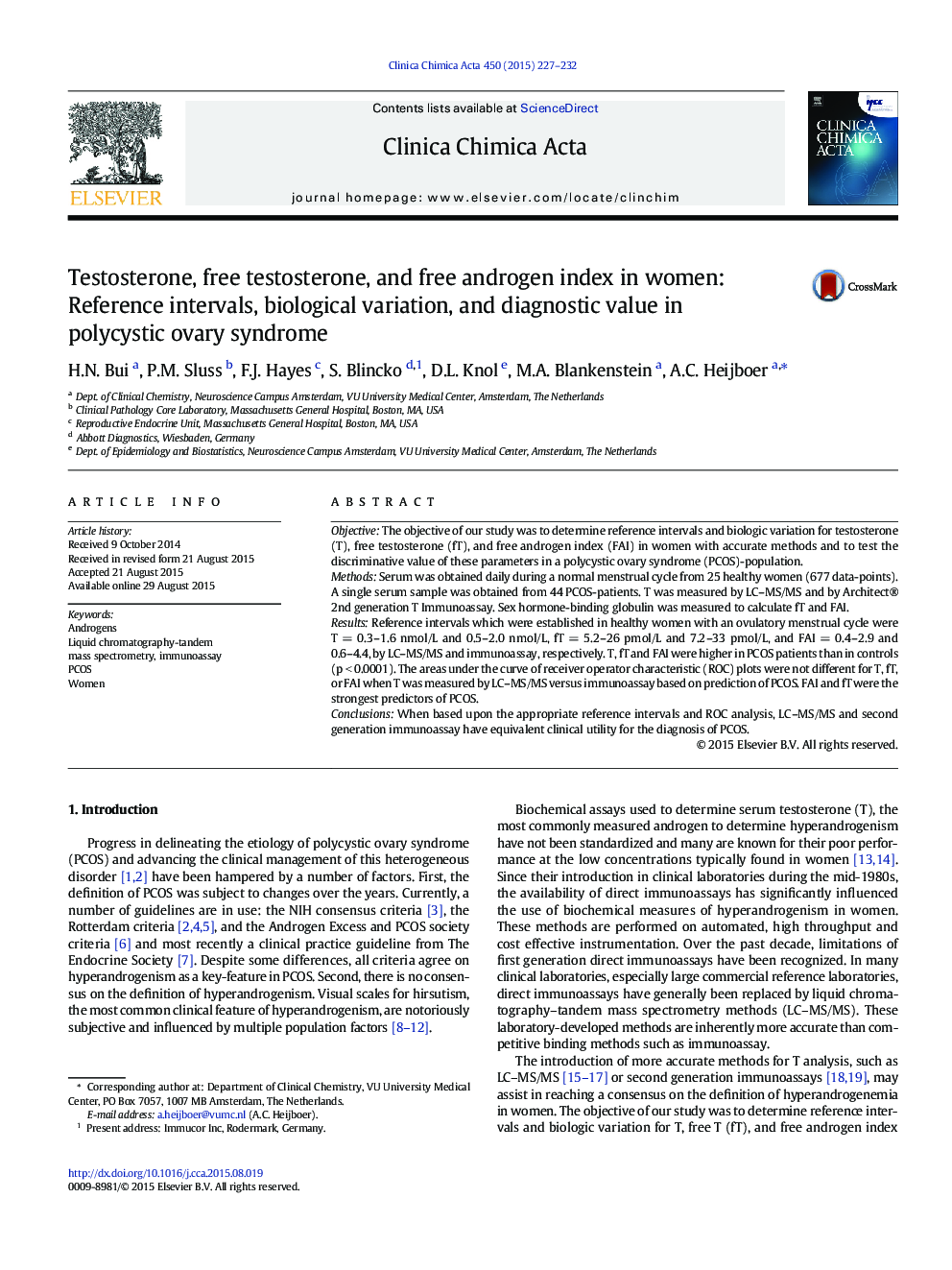| Article ID | Journal | Published Year | Pages | File Type |
|---|---|---|---|---|
| 1965229 | Clinica Chimica Acta | 2015 | 6 Pages |
•We calculated female reference intervals for testosterone, free testosterone, and androgen index.•Female biologic variation for testosterone, free testosterone, and androgen index was determined.•Free androgen index and free testosterone were the strongest predictors of PCOS.
ObjectiveThe objective of our study was to determine reference intervals and biologic variation for testosterone (T), free testosterone (fT), and free androgen index (FAI) in women with accurate methods and to test the discriminative value of these parameters in a polycystic ovary syndrome (PCOS)-population.MethodsSerum was obtained daily during a normal menstrual cycle from 25 healthy women (677 data-points). A single serum sample was obtained from 44 PCOS-patients. T was measured by LC–MS/MS and by Architect® 2nd generation T Immunoassay. Sex hormone-binding globulin was measured to calculate fT and FAI.ResultsReference intervals which were established in healthy women with an ovulatory menstrual cycle were T = 0.3–1.6 nmol/L and 0.5–2.0 nmol/L, fT = 5.2–26 pmol/L and 7.2–33 pmol/L, and FAI = 0.4–2.9 and 0.6–4.4, by LC–MS/MS and immunoassay, respectively. T, fT and FAI were higher in PCOS patients than in controls (p < 0.0001). The areas under the curve of receiver operator characteristic (ROC) plots were not different for T, fT, or FAI when T was measured by LC–MS/MS versus immunoassay based on prediction of PCOS. FAI and fT were the strongest predictors of PCOS.ConclusionsWhen based upon the appropriate reference intervals and ROC analysis, LC–MS/MS and second generation immunoassay have equivalent clinical utility for the diagnosis of PCOS.
